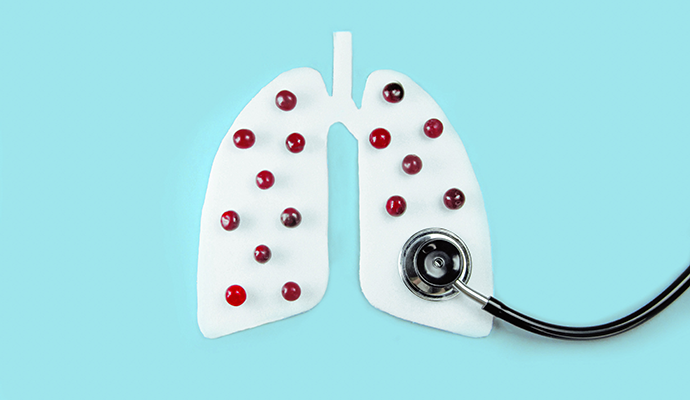87% of Eligible Seniors Do Not Receive Lung Cancer Screenings
Lung cancer screenings were higher among Medicaid beneficiaries in states that covered the preventive service.

Source: Getty Images
- Seniors who do not have coverage for lung cancer screenings as a preventive service are less likely to receive the screening, a recent study from Epic Health Research Network (EHRN) found.
EHRN leveraged data through Cosmos, a HIPAA Defined Limited Data Set that retrieves data from Epic consumers. The data represented almost 333,000 Medicare beneficiaries who were eligible for lunch cancer screenings and over 28,500 Medicaid beneficiaries between 55 and 65 years of age.
The rate of lung screening for eligible individuals in both Medicaid and Medicare was low, below a fifth of the population for each of the public payers.
Over 7,600 Medicaid beneficiaries—or 15.7 percent—received a screening, leaving approximately 84 percent that did not. Nearly 41,500—or 12.5 percent—of the Medicare beneficiaries received the screening. Over 292,400 Medicare beneficiaries who were eligible for a lung cancer screening—or 87.1 percent of eligible patients—did not get screened.
The researchers then analyzed whether coverage of the service might have any impact on whether or not beneficiaries received the screening, specifically in the Medicaid population.
In states that did provide Medicaid coverage for lung cancer preventive screenings, approximately 15.7 percent of beneficiaries received the screening. In states that did not cover the service, the share of beneficiaries who received the screening was modestly lower. In such states, 9.3 percent of eligible Medicaid beneficiaries received the screening.
“Our findings suggest that while insurance coverage is a factor in screening rates for lung cancer, it is not the only factor preventing eligible populations from being screened,” the researchers concluded.
The researchers recommended that beneficiaries who have a history of smoking should provide their pack-year history, a measure that discerns how often a person smokes and, by extension, how susceptible they may be to lung cancer. This helps determine their eligibility for a preventive screening.
“Patients eligible for lung cancer screening may not be aware of their eligibility and whether the screening CT exam is covered by their insurance,” the researchers also noted.
As of January 2019, 31 fee-for-service Medicaid programs did cover lung cancer screenings, according to the American Lung Association. However, 12 programs stated that they did not cover lung cancer screenings and another seven states did not share that information.
Additionally, 12 states’ fee-for-service Medicaid programs plus the District of Columbia’s followed the US Preventive Services Task Force (USPSTF) standards for eligibility criteria, while the rest had other standards or adhered to Medicare’s eligibility criteria.
While the American Lung Association report did not include Medicaid managed care plans’ coverage policies, researchers stated that the data revealed gaps in access to lung cancer preventive screening coverage.
USPSTF updated its lung cancer screening recommendations in March 2021. According to the new recommendation, adults ages 50 to 80 years old should receive a screening if they have a 20 pack-year smoking history and have had a history of smoking for up to 15 years.
A few other recommendations have also been updated in 2021, including the guidance for colorectal cancer, hypertension, and vitamin D deficiency screenings. It is important for payers to remain aware of changes in USPSTF recommendations, as these serve as guidelines for preventive care strategies.
Other studies have found that, similar to patients who do not receive Medicaid coverage for lung cancer screenings, uninsured cancer patients who have no coverage for care are much more likely to delay care. As a result, uninsured cancer patients experience worse patient outcomes when compared to insured counterparts.
Cancer costs have proven to be highest for the most preventable cancers, including lung cancer. Overall, the US spends nearly $150 billion on cancer treatments per year. This is four times the amount the nation spends on comparable conditions.
